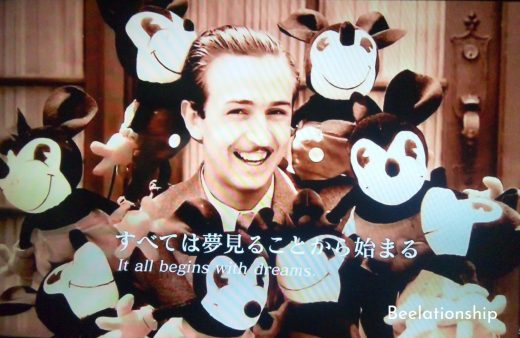A dreamer who keeps his or her feet on the ground and seeks more adventure is shining and affects other people.
One of the good ways to get out of being stuck is dreaming more often and deeply.
I had a chance to think about that lately so that I would like to talk about dream.
It is a story about what Hachi, the directer of Beelationship, dreamed ten years ago before Beelationship started, which leads Hachi to Beelationship now
The Tiny Seed of Hachi’s Dream
In 2006, Hachi dreamed about creating a place for enhancing the quality of life and supporting both aspects of light and shadow of life.
When it comes to the place like that, it meant a therapy room to Hachi.
Why did she think about creating it in a town?
The background of Hachi’s Dream
Hachi was a university student whose major was clinical psychology at that time.
She was just standing at the start line of the world of psychology, which made her excited because that had been her very first dream of her career since she happened to open the book written by Freud in the library when she was an elementary school student.
As learning therapy theories at the university, she realized she loved client centered therapy.
As reading psychotherapy cases, she was obsessed with imagining and thinking what she would do if she was a therapist.
She got chances to visit junior high schools or work at places for children.
Learning people’s heart outside of the university gave her instincts about issues, which were often related to developmental stages or variety of difference of home environment.
She also learned the difference between taking care of individuals and groups.
The other learning which made a big impact on her outside of the university was that being client herself.
As she was learning theories, her intuition told her she needed to be a client so that she took action.
However she could not find her therapist immediately who got along with her.
She visited several places like the therapy room in the university or clinical psychiatry, but only thing she could find was that there were not therapists who could support her as deeply as she wanted.
She was devastated by the facts, imagining there was no place she dreamed of.
Actually there were not near her but there was somewhere she had not realized yet.
Later, she found a clinical psychotherapist who could support her as deeply as she wanted.
The therapist had both scientific and spiritual point of view, which was a silver shining for her.
The therapy with the therapist had been continued for four years.
That was one of the richest experience in her life because she started to realize what her inner container as a human is like and found what kind of approach was suitable for her as a therapist.
When she was a junior high school student, she loved the first line of “Who are you?” of the book of “Sophie’s World”, and asked herself “who am I?” so that therapy of traveling inside deeply was like the richest food for her soul.
Speaking about spirituality was sort of taboo at that time in Japan, but she became certain that that is the area she wanted to take care of with both scientific and spiritual approach.
Yet there still was a problem: she did not know where she could learn that kind of approach.
More than that, she was not sure the approach she imagined was actually existing in the world.
Oh, what was she going to do…?
Unsustainability of Individual Psychotherapy
Before she found her own way, she gradually found some issues about the field of therapy through the experience in her 20s.
First, the session with clinical psychotherapist is not applied to health insurance in Japan.
That means people have to pay full cost of therapy even when they struggle mentally.
Hachi could not forget the story that a friend of hers started a therapy, which took courage for the friend, but he or she stopped it because of the financial burden.
Under the circumstances, people do not think about seeing a therapist.
Why is mental health not treated like health of body?
People see a doctor with their health insurance when they catch a cold.
Seeing a psychiatrist is applied to health insurance so that, if people found a good psychiatrist, it is okay.
However, Hachi found that a psychiatrist tends to focus on symptomatic therapy and prescribing a medicine so that resolving client’s core inner issues rarely be done.
Why is psychotherapy designed for only upper-middle class people, not for people in variety of financial situation?
Is there any place to support mental health in order to prevent from mental sickness?: being able to feel into own heart in a warm relaxed atmosphere with sustainable financial cost.
That was the biggest question Hachi faced in her 20s.
(In 2017, Ministry of Health, Labour and Welfare founded a national license of psychotherapist.
Another license, clinical psychotherapist, which is similar license to the national one and has longer history than the national one but could not be a national license, was founded by Hayao Kawai.
The license of clinical psychotherapist is required to keep updating psychotherapist’s skills but the national license is not.
Hachi is keep eyes on the difference between both licenses and what is going to happen to clinical psychology field.)
Changing myself, Changing the World
When she was stuck in the situation of the industry of psychotherapy, she happened to find the book: “Go for it, Buddhism! The era of the temple Renaissance”(The book is not translated so that the translation is my own version.)
The author was Noriyuki Ueda who was a professor of cultural anthropology, specialized in religion and healing in social change.
He wrote this book just in order to introduce the monk who saved him during his slump, not considering any more that his book was needed by someone else.
Hachi happened to know him at the symposium held by Japan Transpersonal Association.
After listening to his story and reading the book, Hachi was absorbed in writing her thoughts and ideas inspired by the experience.
The detail can be found in this article.
(A friend of Hachi’s read the article and printed out to read it again.
Hachi was really happy to hear that and the episode encourages her a lot still now.)
Hachi feels main dream of Beelationship is coming from the experience.
Now she, in her 30s, thinks that the principle of therapy is relationship.
Through the relationship between a therapist and a client, a client will be healed even if the techniques of the therapy was different.
Flow in relationship is the core for healing people. (The origin of the name of Beelationship is coming from the idea.)
Hachi has experienced that flow in relationship helps people to activate the power inside of them to get better.
A therapist is meant to learn how to unfold relationships.
If the kind of person gets outside of a therapy room, what would happen?
Is it possible to create the flow in relationships like this?: people who have deepened themselves walk around in a town, meet someone with a hidden trouble (everybody has problems…!), communicate one another, and then the person somehow feels a little bit better.
Am I dreaming too much to create the place?: wherein people could see a light, find a hope to meet someone interesting who create opportunities to find the meaning of life or who they are.
Even when people lost their hope to live, they can see the place as a lighthouse or a guidepost to stand up again with their own pace and inner power.
Those were the visions inspired by the book and Hachi is still dreaming of.
The Approach to Learn
Later, Hachi found the approach which can make “changing ourselves, changing the world” possible.
The approach has both scientific and spiritual point of views.
In that approach, the idea like this was introduced: “your suffering might not be your own, but might belong to the community, and could involve the creative power to find a next step as well. “
When Hachi read this, she thought her path was finally found.
She basically loved the approach of psychology but could not found exact one which could cover both science and spirituality enough to put herself sink in it.
The approach, Process Oriented Psychology, says that people have their own way to solve problems and do not need to be someone else affected by the approach.
She was really happy to find a guidepost and the approach was somehow so familiar to her.
While Hachi learns the approach, she founded the Beelationship and found its main theme, strength of motherhood.
Updated Dream in her 30s
What is Hachi dreaming of still now?
First, connecting inner work with outer change.
In another words, “changing ourselves, changing the world.”
That requires the work to support inner work and combine resources in consensus reality.
Beelationship offers information and experience about relationship, and keeps improving but has few resource of materials and knowledge in consensus reality yet.
The director of Beelationship has many roles: manager, someone in the field of psychology, translator, photographer, illustrator, system engineer, web designer, someone who loves household, someone who would like to make a change of mindset of raising children and education, embroiderer, knitter, DIY lover, tea time lover and so on.
Every role can not be accomplished by a small team so that we need to work on building reliable relationships.
Secondly, creating a sustainable business model.
As the article of Arts, Hachi believes that artistic jobs can create a sustainable business model.
Artistic relationship cannot be taken place by anything or anyone.
Variety of equipment will be also needed to create rich and unique experience.
It is required to create sustainable environment for people who work for those ideas above.
We understand that it is crucial to create our own business model and a flow of relationships to get better together.
That is the dream which make hachi keep moving forward.
Find Your Own Dream
We would like to ask you to find your own dream and be connected with it deeply.
Dreams can be found not only in your intention but also in your flickering images, songs coming up from your mouse or a sudden sensation in your body.
What kind of Dream connects us?
If you are connected with your own dream and we could notice what is happening between us or what makes us connected, then stable joints will be eventually appeared in consensus reality.
Hachi feels it can be a tool to open a whole new world and the sustainable relationships.
Feedback
Furoshiki, a traditional Japanese squared flexible cloth, was unfolded.
However, as you can notice, it has many big holes to be patched.
The one thing Beelationship being able to keep doing is finding what is going on around us.
The director of Beelationship, Hachi, is always listening feedback coming from variety of places at any levels.
(This article is written thanks to feedback.)
Therefore we appreciate any feedback at any levels from anywhere.
(Here is one of ways to connect Beelationship.)

